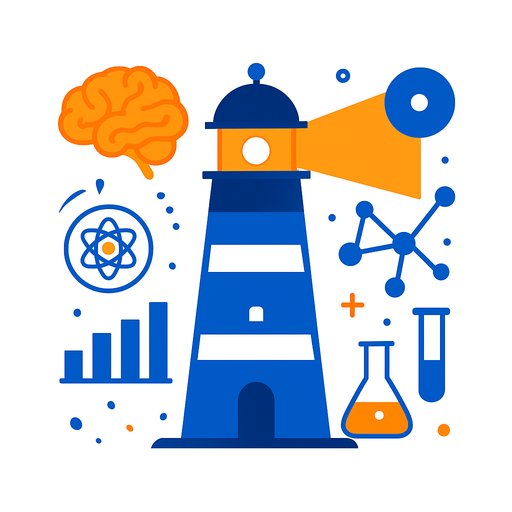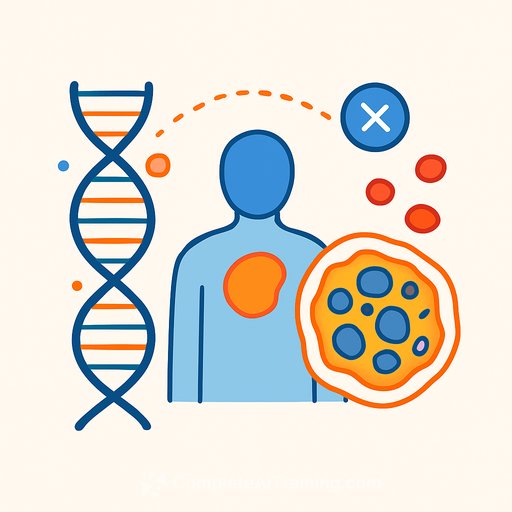TetraScience Launches Scientific AI Lighthouse Program with Takeda as Founding Partner
Boston, Oct. 23, 2025 - TetraScience has introduced its Scientific AI Lighthouse (SAIL) program with Takeda as the founding partner. The goal is direct: replatform biopharma R&D and manufacturing for the AI era, so teams can move faster, reduce risk, and bring better candidates to the clinic.
As a founding SAIL partner, Takeda gains first access to TetraScience's full stack of data and AI capabilities to speed AI-driven discovery, shorten CMC cycles, enable in silico modeling, and increase scientist productivity through agentic AI. The program aims to deliver more products at lower cost by improving data quality, standardizing workflows, and scaling what works.
What SAIL Solves
Pharma R&D has long been limited by fragmented datasets, bespoke workflows, and manual processes that don't scale. SAIL addresses those bottlenecks with an integrated model built for AI-native science.
SAIL: Four Integrated Elements
- Scientific Data Foundry
Deconstructs scientific data locked in vendor-specific systems into atomic units (measurements, metadata, derived results, instrument telemetry). These are organized into AI-native schemas, taxonomies, and ontologies, then productized for reuse and sharing. This helps protect teams from vendor lock-in across ELNs, LIMS, instruments, IoT, and robotics, while strengthening compliance and audit readiness. - Scientific Use Case Factory
Combines AI-native data from the Foundry into standardized, repeatable, and configurable processes. Hundreds of common scientific use cases across R&D and manufacturing will be deployed under SAIL and made broadly available. - Tetra AI
Semi-autonomous and fully autonomous agentic capabilities that assist scientists across complex, multi-step processes. Tetra AI surfaces the most relevant data across experiments, explores broader chemical and biological spaces, detects patterns missed by manual workflows, and synthesizes inputs in parallel to guide faster, more confident decisions. - Sciborgs
Embedded squads of scientist-engineers who sit at the intersection of science, data, and AI. Sciborgs support adoption and change management by working directly with client teams to ensure sustained use of Scientific AI.
A Practical Flywheel for Scientific Innovation
Each dataset refined in the Foundry increases fidelity for future workflows. Each use case produced in the Factory feeds learning back into Tetra AI. Every new ontology compounds across domains. More usage creates better data, which produces better insights, which enables more ambitious use cases.
What Leaders Are Saying
"Embedding AI and digital technologies across the R&D value chain is one of Takeda's core strategic areas for our future," said Nicole Glazer, Head of R&D Data, Digital and Technology at Takeda. "Our data-driven R&D approach will reduce discovery timelines, enable the identification of targets faster, and help us design better therapeutic candidates."
"By transforming how our scientists access, analyze, and share research data, we're unlocking new levels of productivity and enabling AI-powered insights through a connected, online data environment," said Jim Villa, Global Head of Research Strategy & Operations at Takeda. "Beyond boosting productivity, we're driving innovation-leveraging data and agentic AI to integrate information faster, uncover new connections, define better hypotheses, and accelerate innovation across our drug discovery engine."
"Pharma has lived under the shadow of Eroom's Law-the observation that drug development costs double roughly every nine years-for decades," said Patrick Grady, CEO of TetraScience. "By evolving the industry from unscalable, bespoke data projects and workflows to productized and industrialized AI-native scientific data and AI-enabled workflows, we can help bend the curve on Eroom's Law-accelerating discovery, shrinking cycle times, and expanding the boundaries of what science can achieve. Our SAIL partnership with Takeda is a model for the industry's future."
Learn more about Eroom's Law and why it matters for R&D productivity.
Why This Matters for Scientists and R&D Leaders
- Move from one-off data projects to reusable data products with clear schemas, ontologies, and provenance.
- Standardize high-impact use cases so they can be scaled across labs, sites, and modalities.
- Use agentic AI to streamline multi-step workflows, triage experiments, and reduce rework.
- Invest in change management: embed scientist-engineers who can translate between science and AI.
What's Next
TetraScience plans to deploy hundreds of AI-enabled use cases across the R&D and manufacturing value chain through the SAIL program, then share them broadly with the industry. As data quality compounds and workflows standardize, expect faster cycles from experiment to decision-and a higher bar for candidate quality.
About TetraScience
TetraScience is the Scientific Data and AI Company. Its Scientific Data Foundry converts the raw materials of science into AI-native data, and its Scientific Use Case Factory industrializes AI-enabled workflows across R&D and manufacturing. Tetra AI connects the Foundry and Factory with agentic capabilities that guide scientists through complex workflows and surface cross-domain insights. Backed by leading investors and trusted by major biopharma companies and partners including NVIDIA, Databricks, Snowflake, and Microsoft, TetraScience is replatforming scientific industries for the AI era. For more, visit tetrascience.com.
Practical Next Steps
- Audit data sources: instruments, ELNs, LIMS, and IoT feeds. Prioritize high-variance, high-value data for conversion to AI-native formats.
- Select two to three high-frequency use cases (e.g., assay QC, method transfer, batch release analytics) for standardization and scale.
- Stand up a small "sciborg" function-scientist-engineers with clear ownership for ontology, workflow templates, and adoption.
- Upskill teams on AI tooling and workflow design. If helpful, explore focused training options for R&D roles at Complete AI Training.
Media contact: pr@tetrascience.com
Your membership also unlocks:






